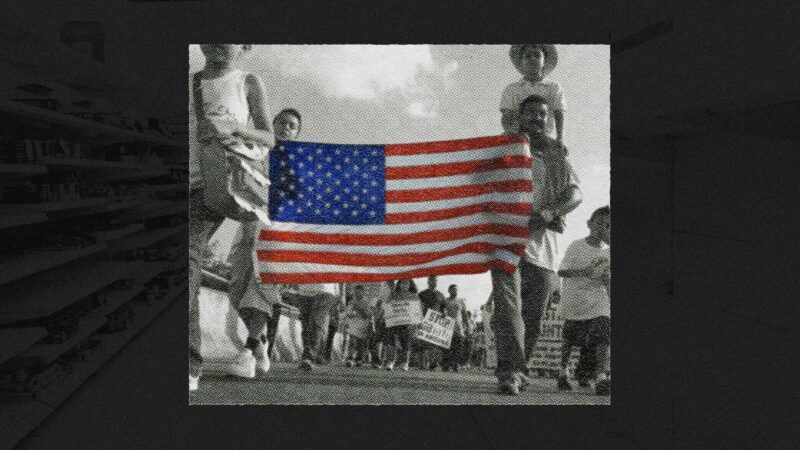Grocery Shelves Are Empty, but Immigration Waitlists Are Full
There is an obvious solution to America's ongoing workforce woes.

Grocery shelves across the United States are bare, hospitals are offering nurses tens of thousands of dollars in bonuses to join their depleted and overworked teams, and many school districts can't find bus drivers (or even teachers!) to take care of their students. Americans alone clearly can't meet all of these needs, yet from July 2020 through July 2021 the U.S. welcomed only 256,000 immigrants, a decrease of more than 75 percent from the mid-2010s.
In September 2021, the U.S. had 10 million job openings but only around 8 million people seeking work opportunities—a unique imbalance complicated by the ongoing pandemic, by individuals embracing self-employment, and by the COVID checks many people received from the government. Those handouts have mostly receded since September, but many employers have not taken down their "help wanted" signs.
Jim Dudlicek of the National Grocers Association, who represents more than 1,500 retail and wholesale grocers, reports that many of the group's members are operating their stores with less than 50 percent of their normal workforce. According to Dudlicek, labor shortages across the supply chain—including an insufficient number of truck drivers—is contributing to both price inflation and shortages.
Immigrants frequently fill jobs that native-born Americans are reluctant to do. Unsurprisingly, the largest gaps in the labor market tend to appear where immigrants make up a larger share of the workers. According to the Bureau of Labor Statistics, in 2020 "foreign-born workers were more likely than native-born workers to be employed in service occupations; natural resources, construction, and maintenance occupations; and production, transportation, and material moving occupations." Foreign-born workers make up roughly 17 percent of the U.S. labor force. In each of the struggling sectors mentioned above, more than 20 percent of the workers are already immigrants.
This dynamic isn't just affecting low-wage jobs. According to Bloomberg, the U.S. is currently experiencing its worst health care labor shortage ever. An estimated 2.7 million immigrants are already working in hospitals. In October, 16 percent of American hospitals reported that they were critically short-staffed and the situation has only gotten worse. These essential jobs need to be filled so desperately that health officials are allowing staff infected with COVID to stay on the job. Many health care workers are experiencing burnout, and immigrants have already proven they can step in and get the job done.
Immigrants won't solve every labor shortage in the U.S., but letting more people come here for an honest and well-paying job would be a great place to start. The sooner we see more immigrants allowed into the U.S., the sooner we'll see more milk and meat at the supermarket.


Show Comments (93)